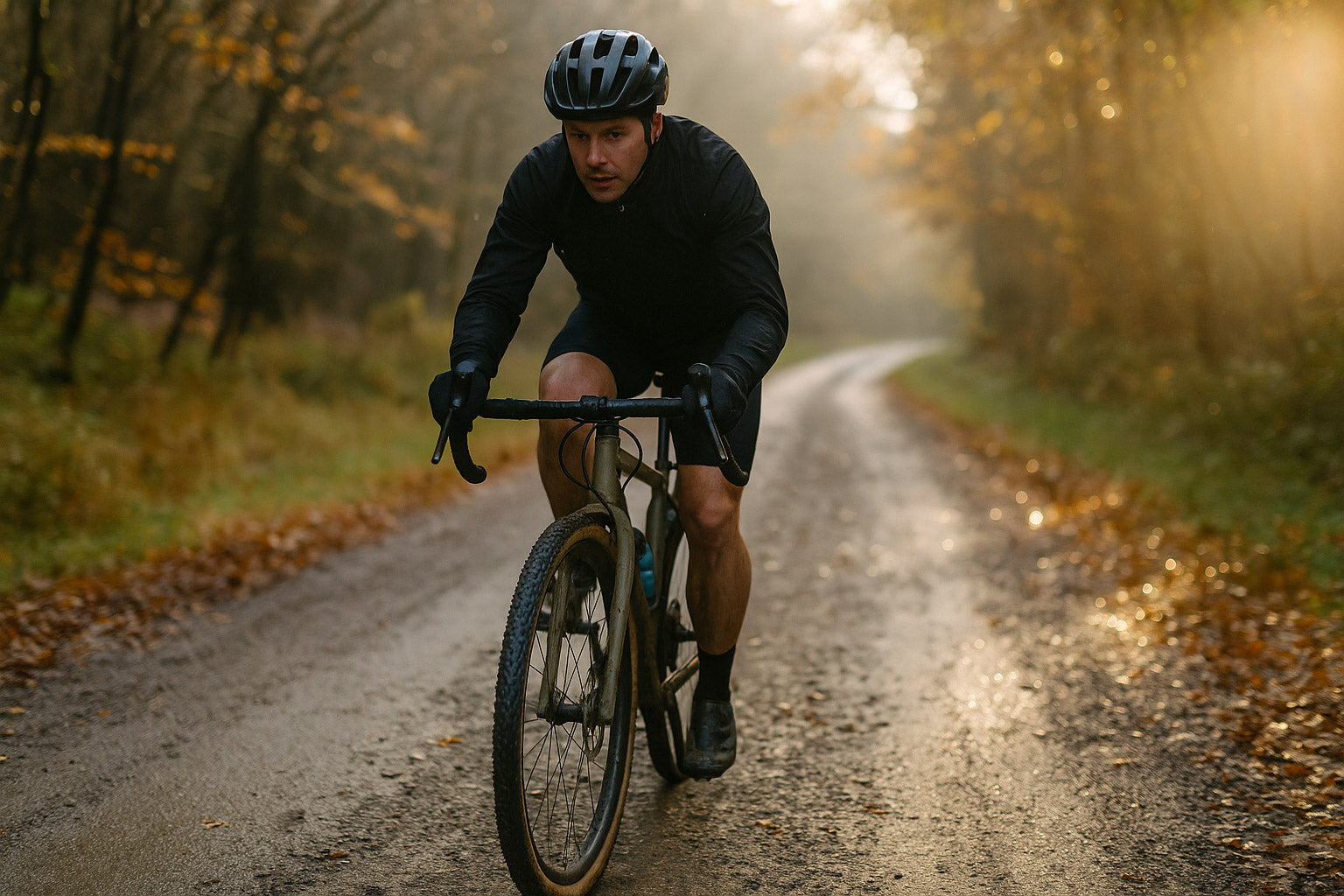
Gravel Tires Are Getting Wider (Up to 50–57 mm). What It Means for Fall Bikepacking, Layers, Lights & Mounts
Shoulder season hits different. Nights creep in, temps drop, gravel gets chunkier. Frames are clearing 50 to 57 mm. Tires look huge, grip harder, shrug off thorns. If you’re loading bags and chasing dirt after work, this is your cue. This guide breaks down gravel tire width 2025 realities, the 50mm gravel tires wave, and the fall bikepacking gear you need to keep pace.
Why wider gravel tires exploded in 2025
Comfort, control, puncture resistance. That’s the trio. Bigger volume lets you drop pressure, float rough washboards, and keep speed on torn-up B-roads. Pros and testers leaned in all year, and brands followed with frames and wheels tuned for wider gravel clearance. Coverage across Cycling Weekly and Bicycling keeps showing 50 mm showing up stock, sometimes more.
On the extreme end, a few new gravel frames now list 57 mm. That’s monster room by drop-bar standards and a clear signal this isn’t a fad.
Do you need a new frame? Quick clearance checks
Start with your bike maker’s stated max. Then measure real space at the fork crown, chainstays, seatstay bridge. Tire labels lie, measured width grows with wider rims, and mud steals room. Aim for at least 6 mm gap to any frame or fork surface for safety, more if your routes turn sticky. ISO 4210 governs these tests, and many techs point to 6 mm as the pass line.
Reality check for 57 mm: not every frame wants it. Plenty of 2025 platforms top out around 50 mm, some split front and rear clearance. Pinarello’s new Grevil F publishes 50 mm. Factor’s Aluto lists about 52 up front, 47 rear. Read the spec sheet before you buy rubber.
What wider tires change about your kit
Pressure
Bigger casings need less psi to run fast on mixed terrain. Use a calculator to nail a start point, then drop in small steps until you stop pinging off edges. For many riders on 45 to 50 mm: think mid 20s psi, heavier loads a touch higher. Use front slightly lower than rear. Silca and Rene Herse both publish good tools and explain the tradeoffs.
Tools
Plugs save nights. Add a Dynaplug-style kit, a couple bacon strips, a small sidewall boot, fresh sealant. Wider rubber still flats. It just flats less.
Lights
Gravel night riding lights need beam spread, not just raw lumens. Bar light for terrain, optional helmet spot to read corners. 700 to 1000 lm is clean for steady gravel, faster descents want more. Keep runtime honest for fall overnighters.
Layers
Shoulder-season bikepacking layers live in the gray zone. Windproof shell for long descents, packable rain piece for squalls, glove system you can swap, toe coverage or heated insoles for dawn starts. See picks below.
Shoulder-season packing
Wind and rain layers
- Ultralight Reflective Cycling Jacket for high-viz wind protection
- StormShell Cycling Jacket for wet and cold pushes
Cold-toe solutions
ThermoRide Pro Heated Insoles keep blood flowing on frosty mornings
Apparel hubs
Night riding and route finding
Lights that punch and last
NightStrike 700 Bike Light Set. 700 lm front, bright rear, USB-C, quick mounts. Bar-friendly for rough roads.
Be seen in traffic connectors
NightPulse LED Visibility Vest. Fiber-optic LEDs plus reflective hits so cars catch you early.
Phone mount for washboards
GUB G81 Aluminum Phone Holder. Locks your nav in place when the road turns to marbles.
Quick fit notes for 50 to 57 mm
- Check your rim’s internal width. A wider rim makes the same tire measure bigger.
- Expect more mud carry. Leave extra space if your loop mixes clay and farm grit.
- Wider tires usually cap at lower max psi. Respect the casing limit on the sidewall or brand page. Example, many 48 to 50 mm gravel casings list max around 50 to 55 psi even tubeless.
Inline picks worth your cart
- Ultralight Reflective Cycling Jacket
- StormShell Cycling Jacket
- NightStrike 700 Bike Light Set
- NightPulse LED Visibility Vest
- GUB G81 Aluminum Phone Holder
- ThermoRide Pro Heated Insoles
- Bike Essentials
FAQs
Can I run 50 mm on my older gravel bike
Maybe. If your maker lists 45 mm max, 50 mm is a stretch. Measure real room at fork crown, chainstays and the seatstay bridge with your current rims and know that wider rims make tires measure larger. Leave at least a few millimeters of daylight to any surface, more for mud. ISO 4210 safety tests guide these clearances, and many techs use 6 mm as a safe line.
Ideal pressures for 45 to 50 mm mixed terrain
Start with a calculator, then tune by feel. Mid 20s psi for many riders, a bit higher with full bags or heavier systems. Run front slightly lower than rear.
Do I need different lights for gravel vs road
Usually. Gravel rewards a wider, smoother beam so you read texture and avoid tunnel vision. 700 to 1000 lm covers steady pace, add a helmet spot or more output for fast descents. Keep a bright rear and reflective add-ons for paved connectors.
- Choosing a selection results in a full page refresh.
!
